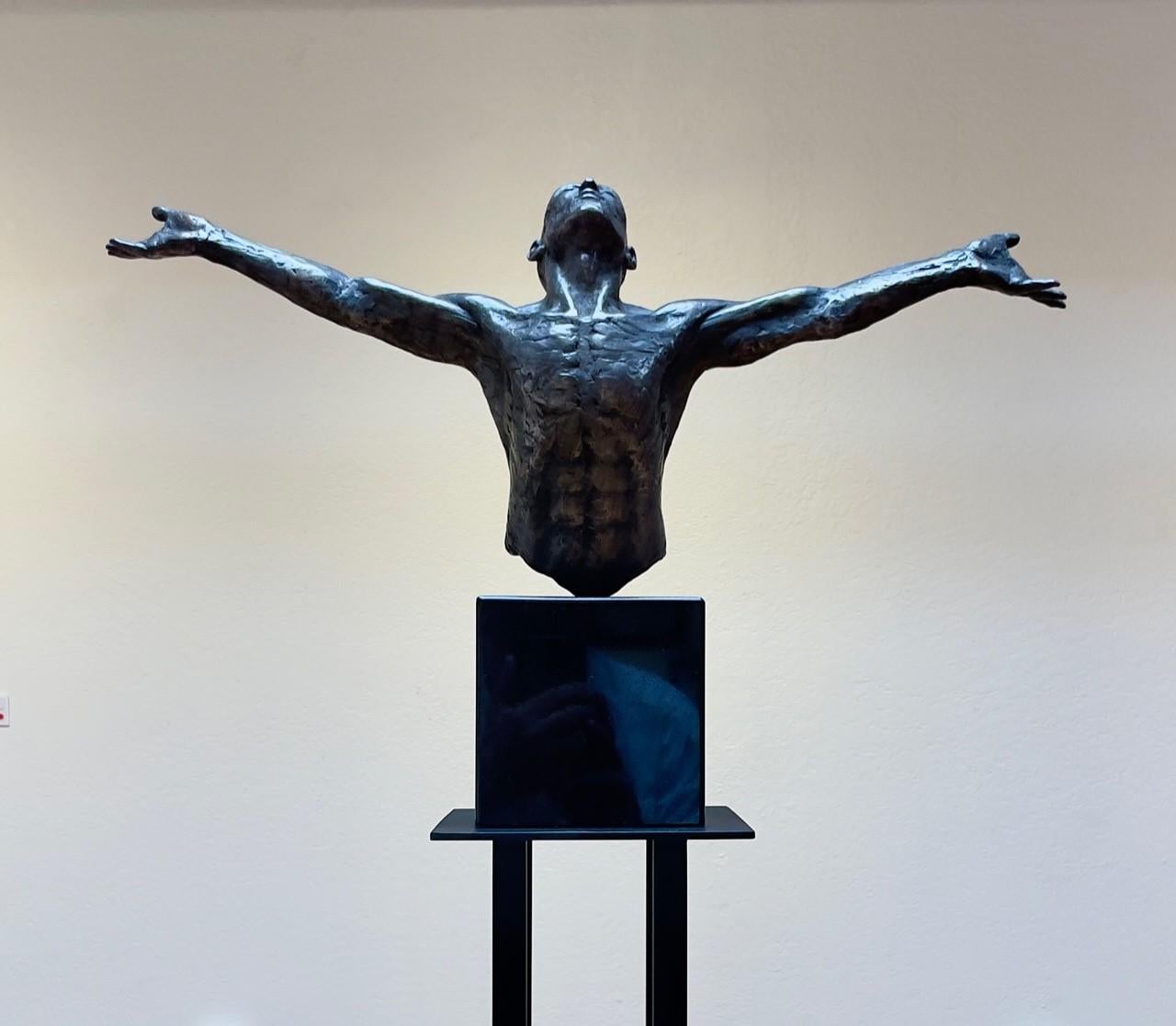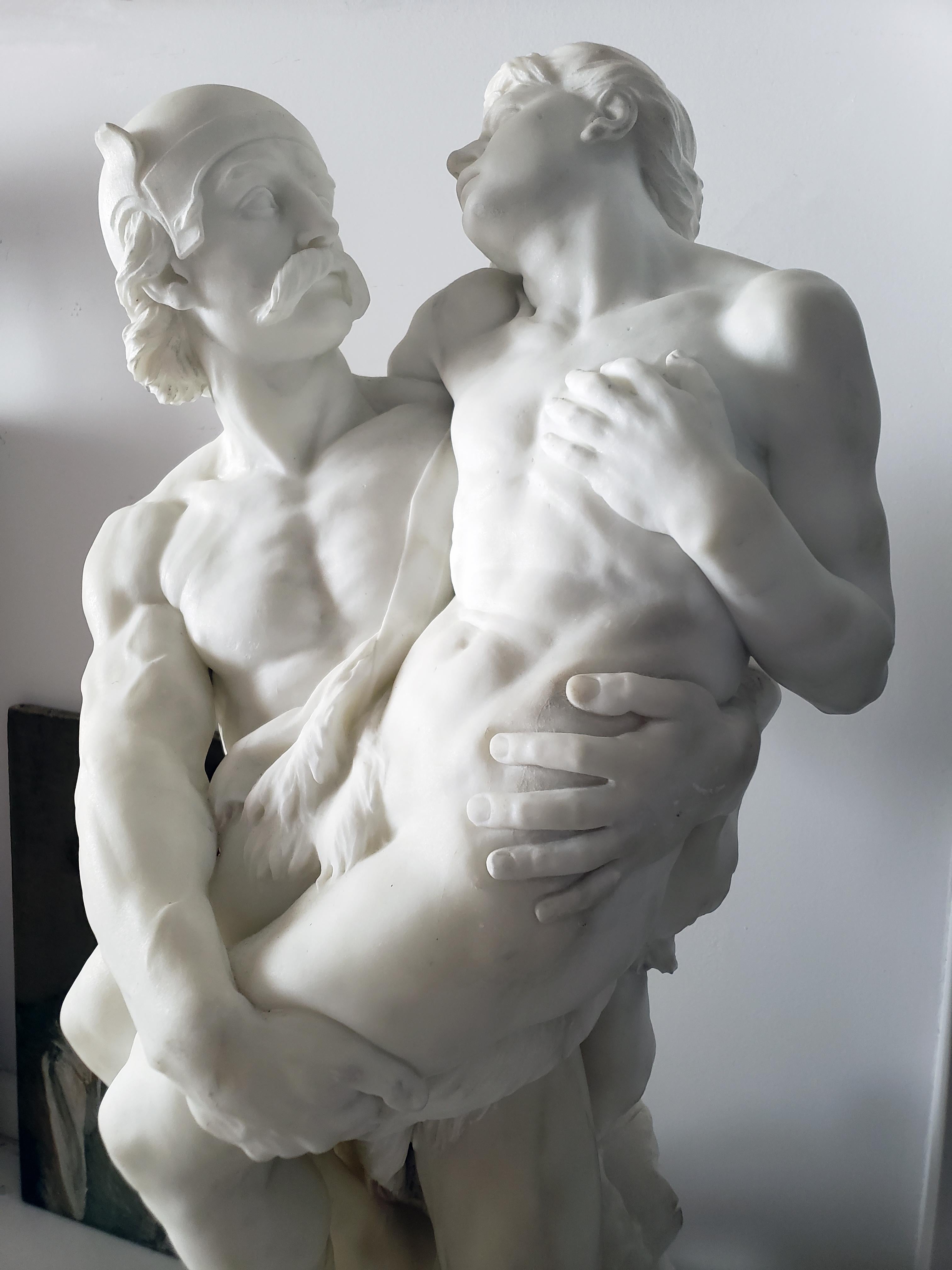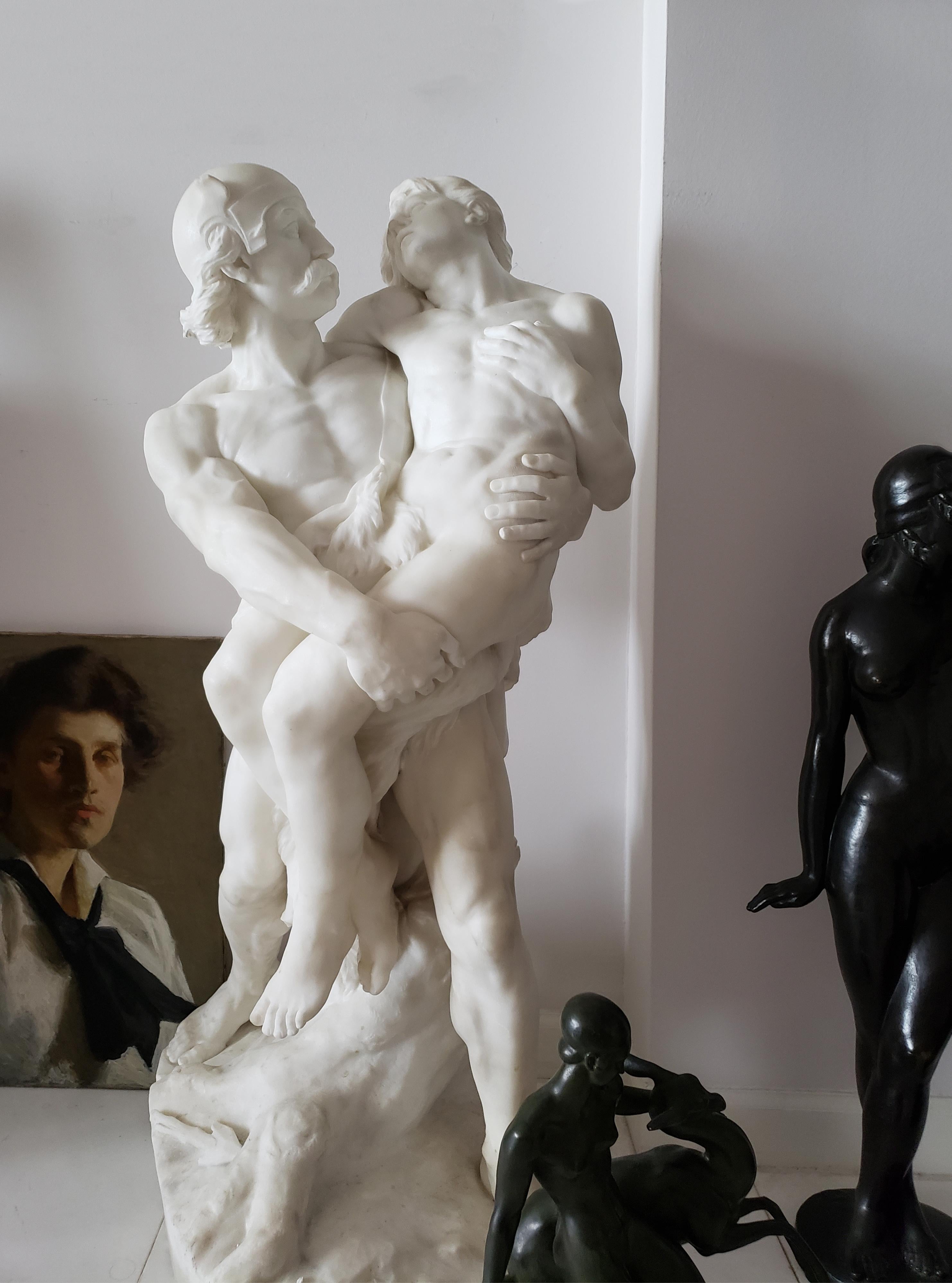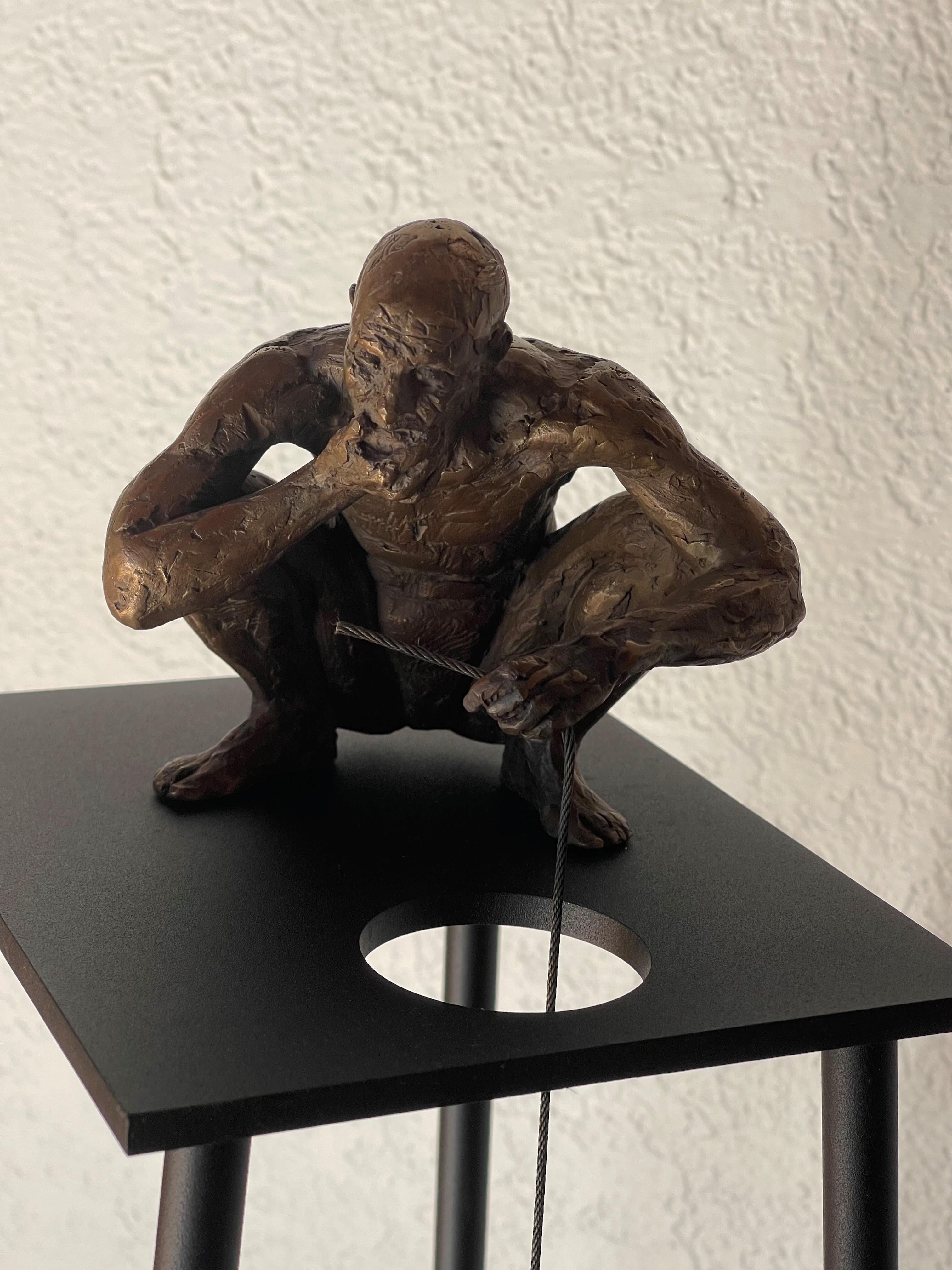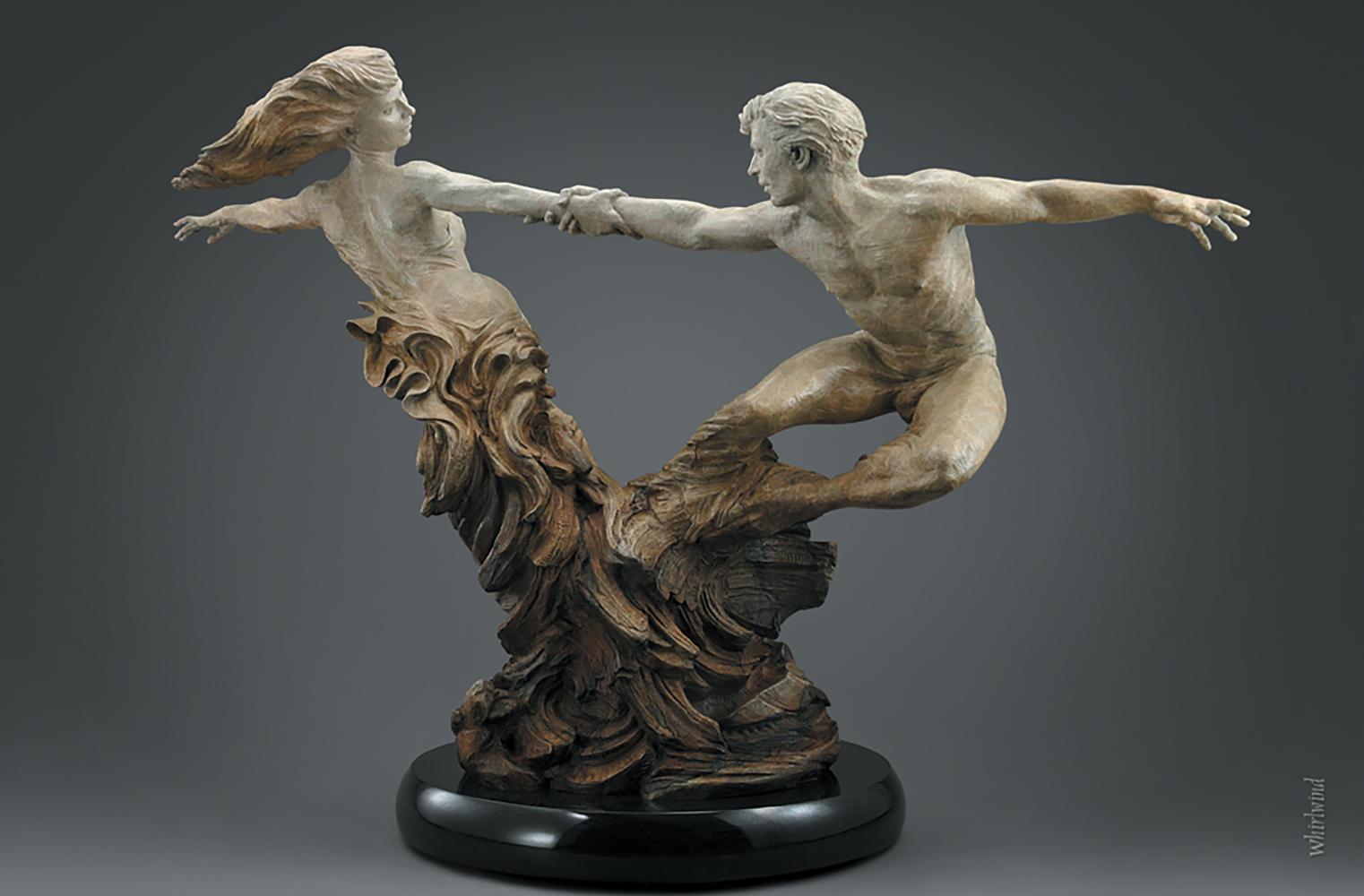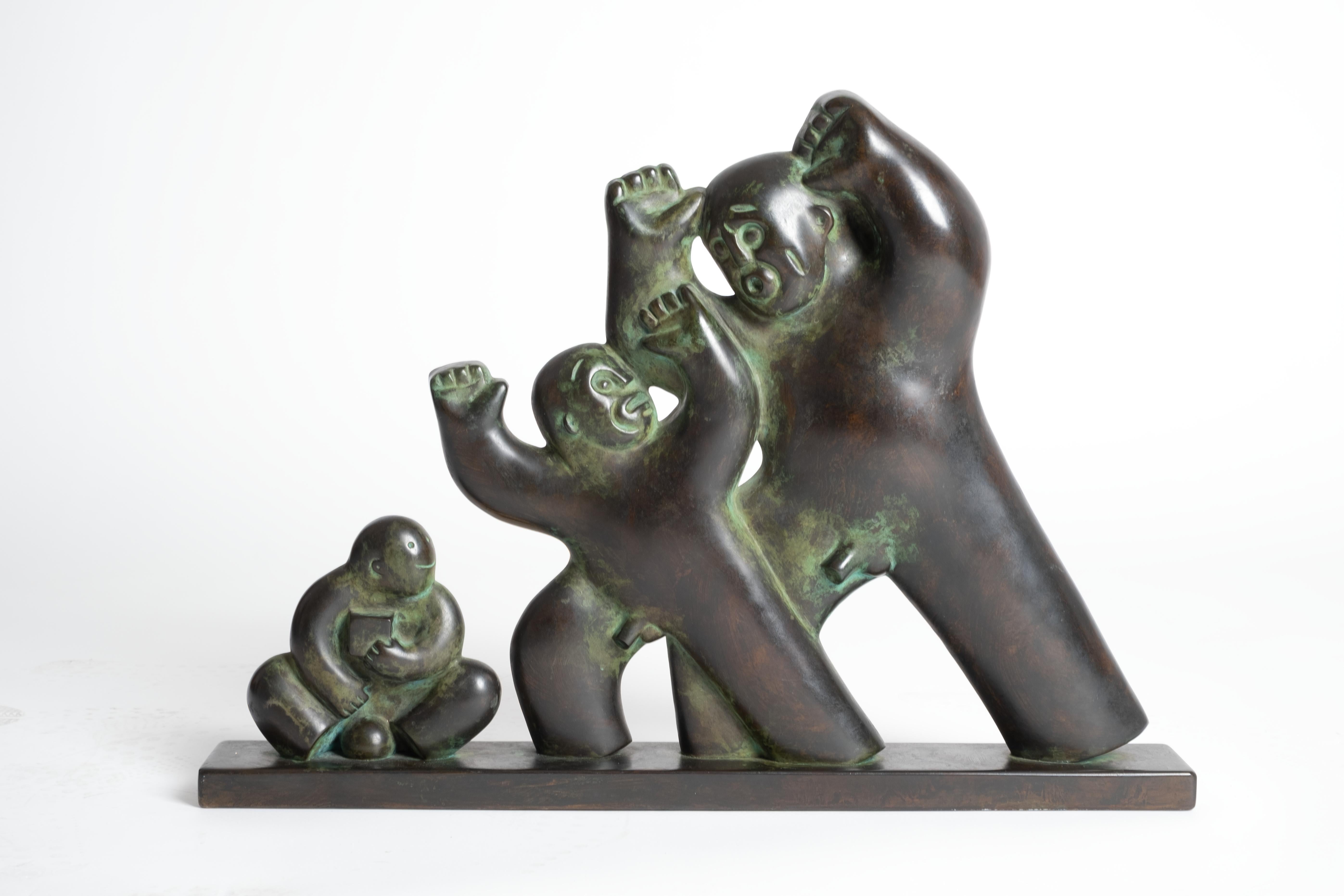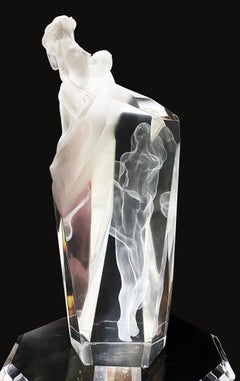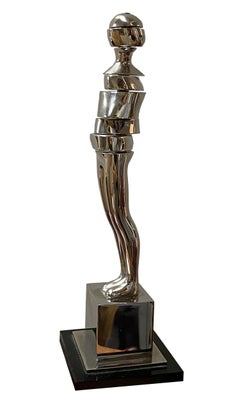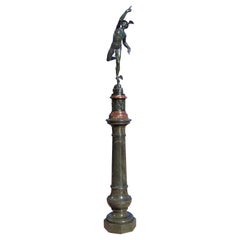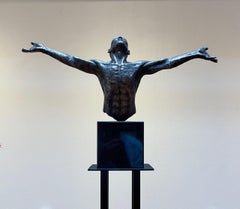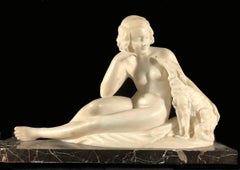
Nu Au Levrier
View Similar Items
Want more images or videos?
Request additional images or videos from the seller
1 of 5
Guglielmo PugiNu Au Levrierc. 1900
c. 1900
About the Item
About the Seller
5.0
Vetted Seller
These experienced sellers undergo a comprehensive evaluation by our team of in-house experts.
Established in 1970
1stDibs seller since 2017
141 sales on 1stDibs
Typical response time: 21 hours
More From This SellerView All
- Dance of LifeBy Frederick HartLocated in Missouri, MOFrederick Hart (American, 1943-1999) Dance of Life, 1997 Edition: 195/350 along base Signed, dated along base 23.25 x 8.75 x 8.25 inches Frederick Hart was a prominent late 20th cen...Category
1990s Modern Figurative Sculptures
MaterialsAcrylic Polymer
Price Upon Request - Falling Man, 1990By Ernest Tino TrovaLocated in Missouri, MOFalling Man, 1990 By. Ernest Trova (1927-2009) 6.5" x 2" x 2" Ed. 50/99 Numbered/Dated on Bottom *This figure has multiple moving sections Known for his...Category
20th Century Abstract Figurative Sculptures
MaterialsStainless Steel
Price Upon Request - Jockey On HorsebackBy Hans GuradzeLocated in Missouri, MOHans Guradze (German, 1861-1922) "Jockey On Horseback" Bronze Approx. 19.5 x 17 x 6 inches Signed "H. Guradze Berlin" on BaseCategory
1890s Realist Figurative Sculptures
MaterialsBronze
Price Upon Request - Lion and Antelope (No. 23)Located in Missouri, MOAlfred Barye (1839-1882) "Lion and Antelope" Bronze Approx. 7.5H x 9W x 4D inches Signed "BARYE.ALF" and Inscribed under base "NO. 23 LION AND ANTELOPE" The son of a goldsmith, Parisian born Antoine-Louis Bayre was a sculptor of animal subjects and acclaimed, not only for his apparent skill, but as the founder of what became known as the French Animaliers School. Among his patrons were representatives of the state government and royalty including the Duke of Orleans and the Dukes of Luynes, Montpensier and Nemours. Well compensated financially, he was able to buy the best of materials and hire the country's most skilled foundry craftsmen. The foundry he hired was owned by Ferdinand Barbedienne, and casts from this period were stamped with the letters, FB. However, he did not make a lot of money from his work because he was such a perfectionist that often he would not sell his work because he thought it was not 'quite right'. In 1848, he declared bankruptcy, and his molds and plaster casts were sold along with the copyrights. Bayre's specialty was aroused, angry seeming wild game such as lions and tigers and elephants, but he also did equestrian groups and mythology figures. In order to do realistic depictions of animal anatomy, he spent much time at the Jardin de Plantes in Paris. His early training was as an apprentice to a metal engraver, but being drafted in the army in 1812, ended that education. In 1832, he had established his own studio, and unique at that time was his method of cold stamping his bronze casts, so that each one had a special number. He had his first entry, The Milo of Croton...Category
19th Century Realist Figurative Sculptures
MaterialsBronze
Price Upon Request - Study AimBy Carl KaubaLocated in Missouri, MOCarl Kauba "Study Aim" c. 1920 Bronze with Brown Patina Signed approx. 9.5 x 10 x 4 This Austrian sculptor was born in Vienna in 1865. His teachers were Karl Waschmann (1848-1905), known for his ivory sculptures and portrait plaquettes of contemporary celebrities, and Stefan Schwartz (1851-1924), who exhibited in Paris, including the Exposition Universelle of 1900 where he won a gold medal. Kauba's intricate bronzes, imported to the United States between 1895 and 1912, were cast at the Roman Bronze Works. Kauba was part of the nineteenth-century tradition of polychrome bronze sculpture. There were several types of patinas on a single statue: he could render the color of buckskin, variously tinted shirts, blankets, feathers, as well as beaded moccasins. Reportedly, Kauba came to America around 1886. Inspired by the Western tales of German author Karl May, he traveled to the West and made sketches and models. Critics, however, pointed out inaccuracies of costume and other details. For instance, the guns that his "mid-nineteenth-century" figures use are models produced after 1898. Apparently he did all of his works back in Vienna. Besides the variety of color, Kauba's bronzes show a great range of textures and his style is highly naturalistic. The sculptor loved ornament, some of which he rendered with coiled wire for reins, rope and feathers in headdresses. He successfully rendered figures in motion and often executed compositions with more than one figure. Berman (1974) illustrates non-Western subjects by Kaula, such as the pendants Where? and There (ca. 1910), a seated Scottish couple, impressive in the expressions and the details on patterned fabrics of both sitters. Another genre piece is Buster Brown...Category
Early 20th Century Realist Figurative Sculptures
MaterialsBronze
Price Upon Request - Native American in CanoeBy Carl KaubaLocated in Missouri, MOCarl Kauba (1865-1922) "Native American in Canoe" Polychrome Bronze Signed approx 5.5 x 10 x 2.75 inches This Austrian sculptor was born in Vienna in 1865. His teachers were Karl Waschmann (1848-1905), known for his ivory sculptures and portrait plaquettes of contemporary celebrities, and Stefan Schwartz (1851-1924), who exhibited in Paris, including the Exposition Universelle of 1900 where he won a gold medal. Kauba's intricate bronzes, imported to the United States between 1895 and 1912, were cast at the Roman Bronze Works. Kauba was part of the nineteenth-century tradition of polychrome bronze sculpture. There were several types of patinas on a single statue: he could render the color of buckskin, variously tinted shirts, blankets, feathers, as well as beaded moccasins. Reportedly, Kauba came to America around 1886. Inspired by the Western tales of German author Karl May, he traveled to the West and made sketches and models. Critics, however, pointed out inaccuracies of costume and other details. For instance, the guns that his "mid-nineteenth-century" figures use are models produced after 1898. Apparently he did all of his works back in Vienna. Besides the variety of color, Kauba's bronzes show a great range of textures and his style is highly naturalistic. The sculptor loved ornament, some of which he rendered with coiled wire for reins, rope and feathers in headdresses. He successfully rendered figures in motion and often executed compositions with more than one figure. Berman (1974) illustrates non-Western subjects by Kaula, such as the pendants Where? and There (ca. 1910), a seated Scottish couple, impressive in the expressions and the details on patterned fabrics of both sitters. Another genre piece is Buster Brown...Category
Early 20th Century Realist Figurative Sculptures
MaterialsBronze
Price Upon Request
You May Also Like
- Large Fine Bronze Sculpture of Mercury and Original Marble PedestalLocated in Rochester, NYFine Grand Tour bronze sculpture of mercury flying on the wind after Giambologna. Polished rouge marble and bronze attached base. Green marble pedestal. Inscribed Jean de Bologne...Category
Mid-19th Century Realist Figurative Sculptures
MaterialsMarble, Bronze
- "At Last, " SculptureBy Bill StarkeLocated in Denver, COBill Starke's "At Last" is a limited edition, bronze sculpture created by Bill Starke depicting a male figure with out-stretched arms. ( 3/85 ) About the artist: Human beings int...Category
2010s Realist Figurative Sculptures
MaterialsMarble, Bronze
- Warrior and Wounded Youth. Helmeted mustachioed man holding Wounded - Lion FaceBy William John Seward WebberLocated in Miami, FLSigned and titled at the base, Sloan's Auctioneers, 1998 The work shows a peak moment of drama and is meticulously carved in the neo-classical style. Lion garment in the back with ...Category
1870s Realist Nude Sculptures
MaterialsMarble
- Marble Sculpture 19th Century White Carrara Marble Nude Man Wounded NudeBy William John Seward WebberLocated in Miami, FLSigned and titled at the base, Sloan's Auctioneers, 1998 The work shows a peak moment of drama and is meticulously carved in the neo-classical style. Lion garment in the back with ...Category
1870s Realist Nude Sculptures
MaterialsMarble
- Model GirlLocated in Sempach, LUClassic female torso inspired by examples of high Greek sculpture. Sculptor explores the lines and shapes of the female body, embodied the diversity, slightly changed the poses. Thi...Category
1980s Realist Nude Sculptures
MaterialsStone, Bronze
- "The Seeker, " SculptureBy Bill StarkeLocated in Denver, COBill Starke's "The Seeker" is a limited edition (#3/50), bronze sculpture created by Bill Starke depicting a male figure peering beneath him through a small opening. About the art...Category
2010s Realist Figurative Sculptures
MaterialsBronze, Metal

